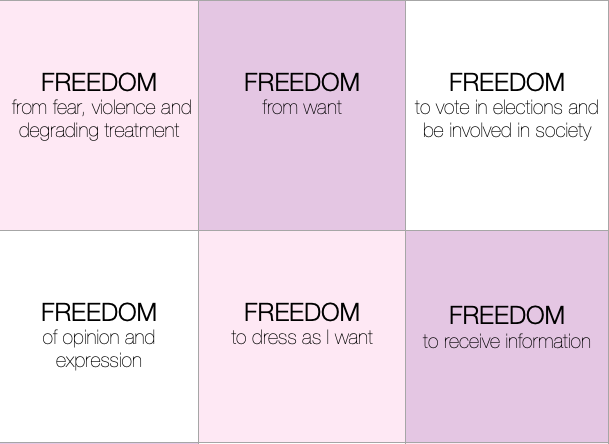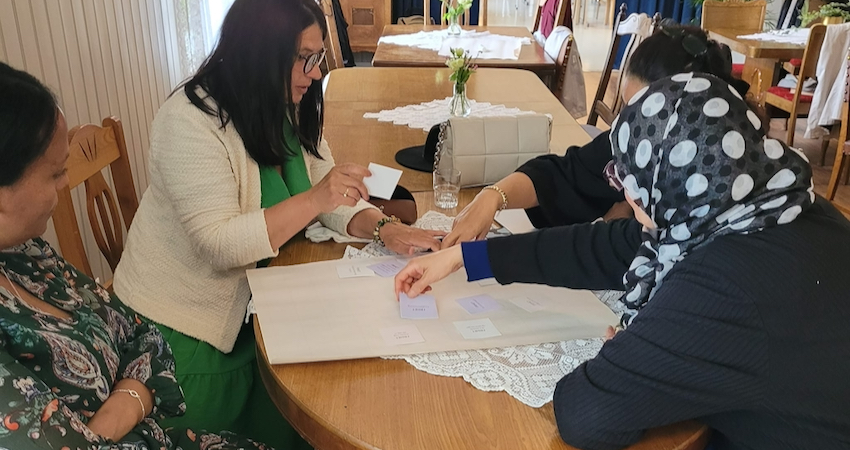Which type of freedom is most important?
There are many types of freedom. Which are the most important types?
Quick facts




Activity goals
- To explore different types of freedom.
- To learn that the most important types of freedom are protected by human rights and national legislation, and that we have the right to be free.

Preparation
Each group is given 12 cards describing different types of freedom (download here). The leader must have copied enough sheets of paper with the different types of freedom written down, and cut out the cards.
Instructions
- The leader divides the participants into groups. Each group is issued 12 cards describing the different types of freedom. Each group must agree on the five types of freedom that they think are the most important (20-30 minutes).
- The groups present their findings in a plenary session. The participants should be encouraged to ask questions to illuminate thoroughly the importance to each individual of the different types of freedom.
- The leader informs the groups that the different types of freedom are protected by human rights. When summarising at the end, it may be advisable to hand out the sheet of paper showing this, in addition to the topic article about freedom.
Reflection
- Was it difficult to reach agreement in the groups?
- Are the different types of freedom mutually dependent? Can they provide examples?
- Are there good reasons why anyone should have their freedom restricted? In which situations?
- Could we – intentionally or otherwise – restrict our own freedom? How?
- Can we train ourselves to be free?
- Should we teach our children to become free individuals able to make their own choices? How do we do this?
Debriefing
The concept of freedom covers many areas. If individuals are to enjoy freedom in a society, all the different types must be in place. They are all important in each their own way and are mutually dependent. If just one type of freedom is removed, this may be perceived as deeply unfair and provocative.
After World War II, the United Nations (UN) global organisation was established, and in 1948 the Universal Declaration of Human Rights was adopted. For the first time in history the most important types of freedom were defined as something each human is entitled to. After this a number of international agreements on human rights, for example the rights of women and children, have strengthened peoples’ right to freedom.
(English translation: John Anthony)



